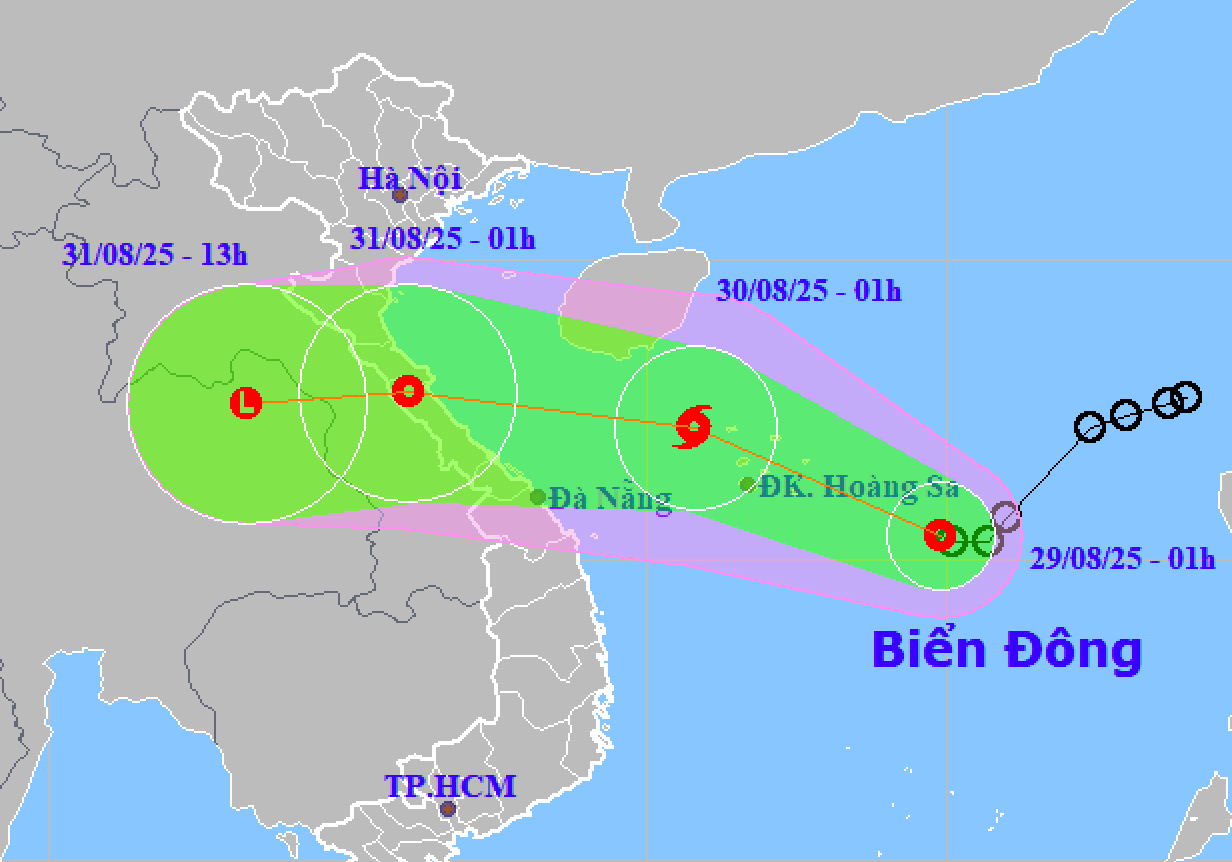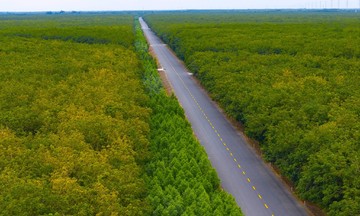At 1 a.m., the tropical depression was located approximately 320 km east-southeast of the Paracel Islands, with maximum sustained winds of 61 km/h (level 6-7) and gusts up to level 9, moving westward at 10 km/h, according to the National Center for Hydro-Meteorological Forecasting. The depression is expected to strengthen into a typhoon today.
By 1 a.m. tomorrow, the typhoon is projected to be in the northwestern waters of the Paracel Islands, with maximum sustained winds of level 8 and gusts up to level 10, maintaining its westward course but increasing its speed to 20 km/h. By 1 a.m. on 31/8, the typhoon is expected to make landfall between Nghe An and Hue, with wind speeds decreasing to level 6 and gusts to level 8.
 |
Projected path and area of influence of the tropical depression. Photo: NCHMF |
Projected path and area of influence of the tropical depression. Photo: NCHMF
The Hong Kong Observatory also predicts the tropical depression will strengthen into a typhoon, but with maximum sustained winds of approximately 65 km/h. After making landfall between Ha Tinh and Hue, the typhoon is expected to weaken over central Laos.
Due to the influence of the tropical depression, the northern South China Sea (including the Paracel Islands) and the northern part of the central South China Sea are experiencing strong winds of level 6-7, increasing to level 8 with gusts up to level 10 near the typhoon's center. Wave heights are expected to reach 3-5 meters.
From tonight, the sea area from Nghe An to Hue will experience increasing winds of level 6-7, reaching level 8 with gusts up to level 10 near the typhoon's center. Wave heights are also predicted to reach 3-5 meters. Vessels operating in these dangerous areas are likely to be affected.
Since the beginning of the year, there have been 5 typhoons in the South China Sea. On 26/8, Typhoon Kajiki made landfall between Thanh Hoa and Ha Tinh with winds of level 10-11 and gusts up to level 13, causing significant damage not only in north-central Vietnam but also heavy rainfall and flooding in northern Vietnam, leading to landslides in several areas.
As of 28/9, the storms and floods have resulted in 6 deaths, two missing persons, and 47 injuries, according to the Department of Dyke Management and Flood and Storm Control. 34 houses collapsed, and nearly 31,100 houses had their roofs blown off, mainly in Ha Tinh province (almost 25,000 houses), with nearly 4,000 houses flooded. 407 schools, 48 health facilities, 72 office buildings, and cultural structures were damaged or had their roofs blown off.
The typhoon also damaged approximately 95,000 ha of rice crops, mostly in Nghe An, Ha Tinh, and Ninh Binh. Over 11,000 ha of vegetable crops, 9,700 ha of fruit trees, more than 53,000 livestock and poultry, 4,000 ha of aquaculture, and 274 floating cages were flooded or swept away.
Transportation authorities reported 456 landslides in Son La, Bac Ninh, Phu Tho, Thanh Hoa, Nghe An, Ha Tinh, and Quang Tri provinces, and 13 damaged bridges. The power system was severely affected, with 1.6 million customers losing power at its peak. As of last night, this number had decreased to 700,000.
Gia Chinh












